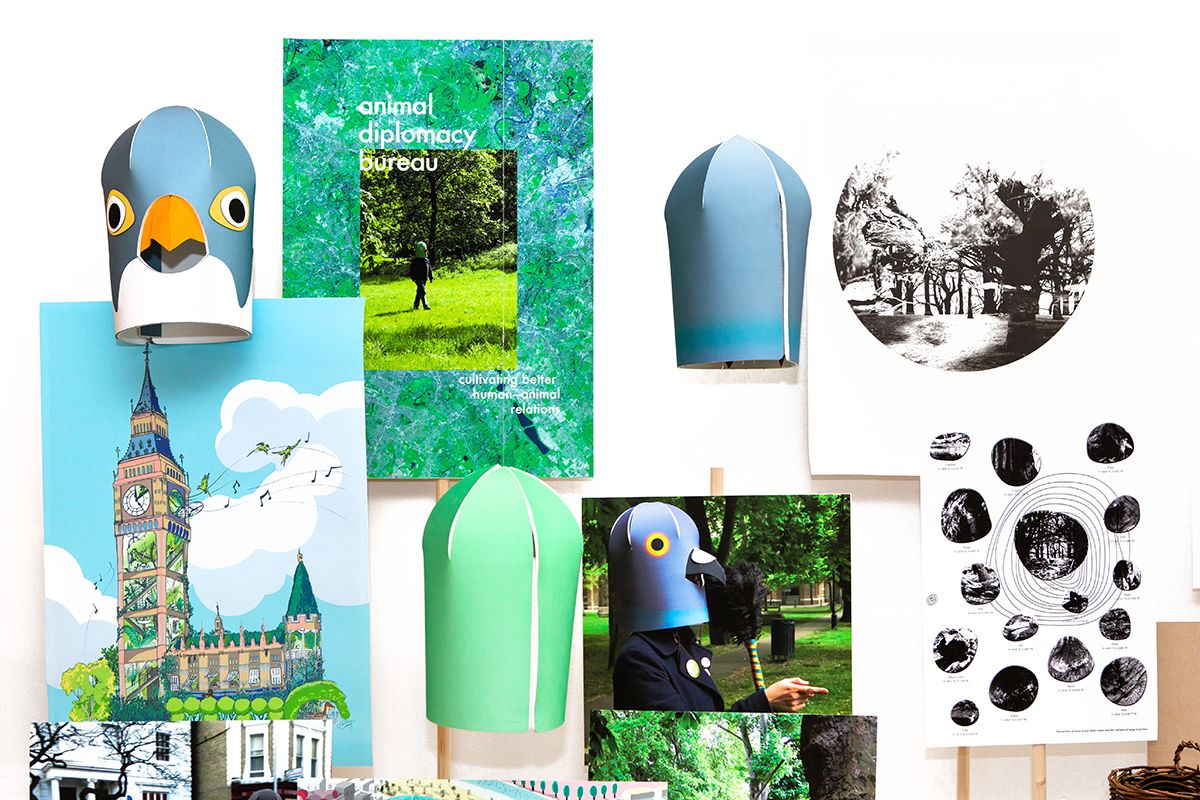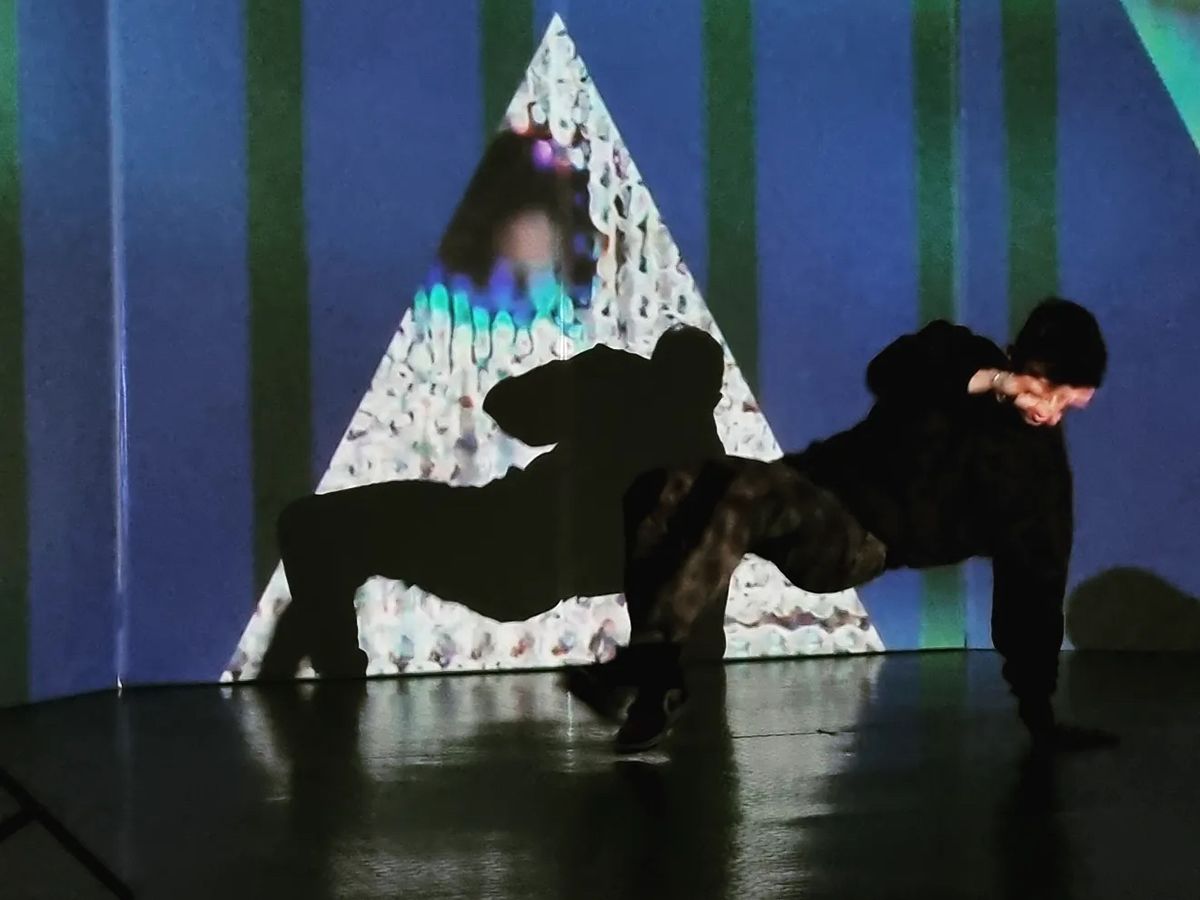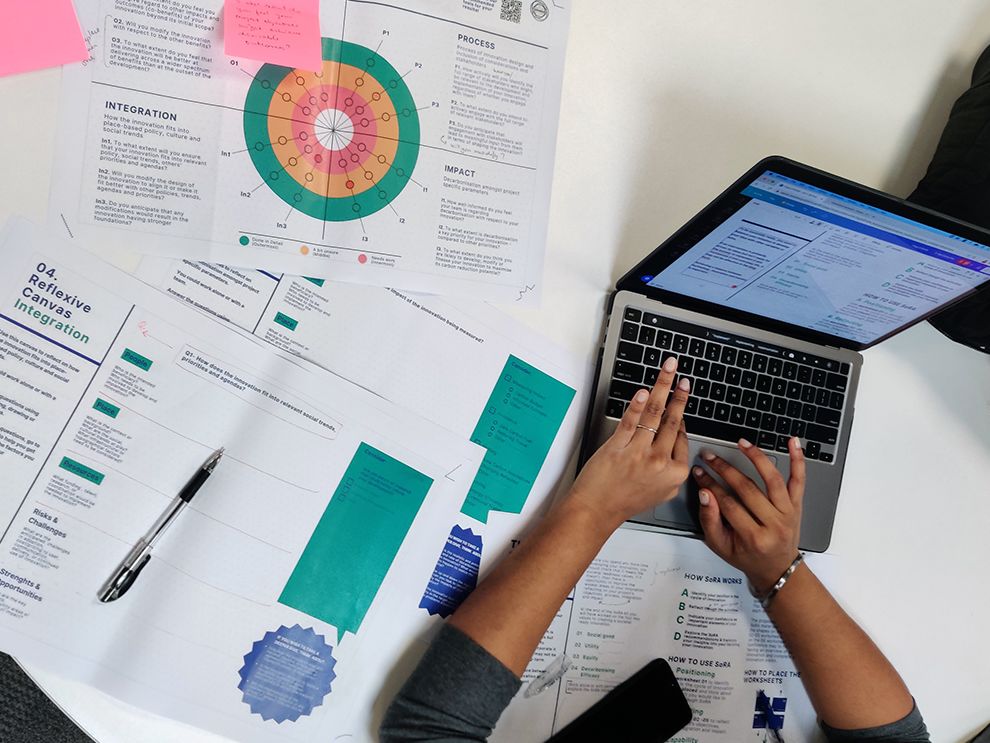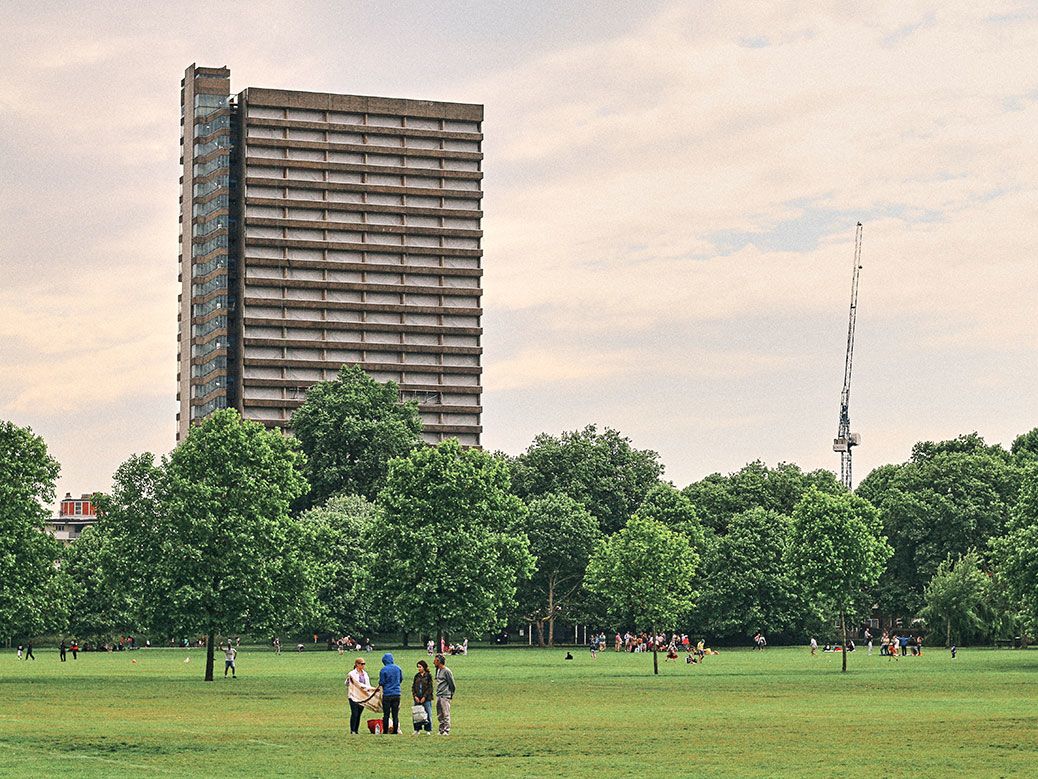
Course Spotlight: BA (Hons) Design for Climate Justice with Rachel Clarke

- Written byChloe Murphy
- Published date 05 September 2023

The climate crisis is already making a profound impact on our planet, reshaping the environments and ecosystems that help us all to thrive. As temperatures continue to soar amidst extreme weather conditions, it’s vital for us to develop new ways of thinking, living and being that offer innovative solutions to pressing global challenges.
At London College of Communication (LCC), our new BA (Hons) Design for Climate Justice course will help you to explore how creative design practice can inform and inspire action towards a more just, sustainable future.
Working across subjects like graphic design, illustration, data visualisation and interaction design, you’ll learn how to communicate complex ideas in ways that connect with a diverse range of audiences and have a profound impact on our collective future.
Situated within an inclusive community of thinkers and makers across LCC's Design School, you'll explore different perspectives and nature-centred design processes, and consider how collaboration can be used to preserve, restore and regenerate.
Over the course of 3 years, you’ll build core design skills, learn creative strategies, and develop your own voice as a communicator and ‘citizen designer’, with opportunities to gain professional experience through live briefs and build your own portfolio.
You’ll then graduate as an emerging design professional who’s prepared to interrogate, advocate and educate – bringing together practical knowledge with creative vision to change the world around you for the better.
We caught up with Course Leader Rachel Clarke to discuss her own journey through sustainable creativity, the kinds of opportunities you can expect to explore on the course, and how studying at LCC can support you to develop your own responsible, ethical practice.

Tell us a little bit about your creative journey so far.
After completing a BA degree in Contemporary Arts and an MA in Visual Cultures, I started writing for a number of international arts magazines while working on community digital arts projects. Projects were mainly collaborations with other arts organisations and theatre companies, but also with social and environmental organisations such as the RSPB, Natural England and Groundwork.
A lot of this involved creating artwork and running workshops to encourage people to tell stories about place. I explored a range of different topics such as refugee migration to the UK, and experiences of physical spaces like ex-mining and quarrying sites, agricultural land, peatland restoration, wetlands, and urban estuaries. Within these projects, communities and local authorities were often working towards reclaiming the land for nature and protecting specialist species whose populations had declined. I was involved in the development of participatory artwork that often involved supporting people to reflect on, appreciate, document and present ideas on caring for a future environment that they wanted to live in.
After doing this for a decade, I wanted to explore the design and use of specific kinds of technology, so I went on to do an interdisciplinary PhD at Culture Lab, Newcastle University. I worked on a number of projects which ranged from solar energy sculptures to bespoke wearable technologies for migrant women - representing international textile heritage with local support services and museum collections.
Since then, my research has focused more on urban sustainability, indigenous ways of knowing and place-based design in the Middle East and East Africa with civic organisations and the United Nations. As an urban food grower myself, I've also recently worked with food growers, designers, soil and data scientists to explore ‘more-than-human’ and nature connectedness perspectives with community-run growing spaces across the UK.
It’s helpful to have had all these different experiences that now feed into my teaching. They’re not only valuable in terms of understanding how students might come to the course with different life experiences, but have also enabled me to teach from a foundation of both research and practice rooted in a range of different disciplines.

What inspired the development of the BA (Hons) Design for Climate Justice course at LCC?
As a College, we've always supported staff and students with a strong commitment to both raising awareness of - reacting responsibly and creatively to - environmental issues and social injustices.
When mass protests started to take place in 2018 declaring a climate emergency, UAL was one of the first universities in the UK to respond to students calling for transformational change across their campuses. Several initiatives came out of that process, including the development of the Climate Emergency Network and our Climate and Environment Action Group - both of which work across UAL to influence teaching, learning, research, operations, and wider community impact and relationships.
At LCC, our MA Design for Social Innovation and Sustainable Futures course launched in 2019 and has been really successful in attracting a wide-range of passionate postgraduate students who are interested in developing projects around alternative, sustainable futures.
Against this backdrop, our Branding and Design Innovation programme team felt that it was timely to develop an undergrad course that could be a precursor to the MA - supporting the next generation of design-focused climate advocates dedicated to putting the climate emergency at the heart of design practice.

Why do you think this is such a vital course?
I think there are 3 main things that make our course both interesting and unique:
- our focus on the role of design in the climate emergency
- our emphasis on justice
- our application of climate knowledge across a range of design disciplines.
We’ll respond directly to the climate emergency, and recognise the significant role that designers and visual communication has to play within it. If we look at how climate science has been disseminated over the past decade through data visualisation and futuristic speculations, there’s been a significant growth in the number of designers whose practice centres on communicating complex scientific ideas to the wider public – helping to raise awareness and build communities of practice around some really important issues.
Secondly, our emphasis on justice helps to sharpen your creative skills in ways that enable you to design responsibly. This includes being mindful that the climate crisis isn’t experienced equally among people and species - recognising the needs of those who are most impacted, and ensuring ideas for future change are equally distributed, and restorative rather than extractive.
Thirdly, our course will provide you with core visual communication design skills that can be applied across lots of different creative areas like graphics, illustration, interaction design and data visualisation while also drawing from cutting-edge climate and social science research.
While other design courses may feature specific projects that speak to general issues of climate justice, being a student on our course will give you the benefit of from gaining in-depth climate knowledge with a broader set of applied design skills across different disciplines.

Who do you think would be a great fit for BA (Hons) Design for Climate Justice?
We’re looking for students who are passionate, interested and curious about how designers can help bring about positive change in response to the climate emergency.
We also hope that we can welcome students from a diversity of cultural, racial and ethnic backgrounds and life experiences who understand the climate emergency differently, bringing the value of multiple perspectives to our community.
What kinds of projects and collaborations can students expect to take part in throughout the course?
We have a fantastic course team, many of whom have their own design practice and research careers working as either freelancers or with/within agencies and organisations such as the United Nations (UN), Defra, local councils and community groups.
We’re also currently in the process of building more partnerships with environmental and justice organisations both within London and internationally. For example, our team will be hosting designers from Holland in the autumn as part of the Drinkable Rivers project, engaging communities in exploring the Thames from source to sea.
We’re currently in discussion with potential partners in Mauritius around a project focused on food security and UNESCO's Ocean Decade. As part of Black History Month, LCC staff will be hosting the Our Story: Africa's Climate exhibition from the Africa Centre which features UAL artists and curators from the African diaspora whose work explores climate change.
While we prepare to welcome our first cohort in 2024, our aim is to connect to projects where students could be involved in raising awareness of key issues - creating resources and visualisations with communities to inform future action in response to the climate emergency.

How will your students be able to gain industry experience?
In your first year, you'll be introduced to industry speakers from backgrounds ranging from design agencies to charitable. environmental and governmental organisations. You'll engage with them through activities such as presentations, live briefs and portfolio critiques, where you'll learn the importance of demonstrating your ideation and realisation processes while improving your communication, collaborative and team-building skills.
In your second year, you'll work in collaborative teams as part of your Professional Practice Unit (PPU), where you'll deliver projects in response to live design briefs set by industry. This unit features across many of our courses at LCC, and student feedback has often highlighted how the PPU is a significant way that students build their skills and confidence as emerging professionals.
In the past, students in our Design School have worked with organisations such as the NHS, Belvoir Farm and Patagonia, and as a School, we’re currently in the process of scoping new student project briefs for the academic year 24/25 onwards.
You'll also have the opportunity to undertake the Diploma in Professional Studies during their time at LCC – an optional, year-long opportunity that gives you additional time and space to develop your professional experience.
LCC is home to a range of different spaces, workshops and studios. What kind of facilities will BA (Hons) Design for Climate Justice students be able to use?
We're really lucky to host a wide range of facilities here at the College: not only digital, but also more traditional physical print facilities that offer really exciting opportunities for experimentation.
You'll have access to a range of different printing tools such as screen printing and block letterpress, for example, which are experiencing a bit of a renaissance as people explore more bespoke, careful ways of tailoring materials that consider the ecological impacts of what we print and how it’s printed.
We're also home to spaces like our 3D Workshop and digital suites with Adobe Creative Cloud that ensure students can move between 2D, time-based or interactive media projects.
You'll be introduced to these facilities from the first year of the course, and work on project briefs that will help you to make the most of the facilities wherever possible - supported by the help of our expert workshop technicians.

What kinds of careers might BA (Hons) Design for Climate Justice students move on to?
You'll be well-prepared for a range of careers, whether working in design agencies or as freelancers working with communities, commercial organisations, government and the third sector.
Many students in the Design School tell us that they want to make a difference by either setting up their own companies or working within organisations to make positive change, so our aim is to prepare our grads to be adaptable and creative.
After all, the ways in which we respond to the climate emergency will require that we adjust to uncertainty. You'll leave us a creative who's well-placed to tackle pressing challenges through your understanding of the climate crisis coupled with design skills that can enable you to communicate complexity.
What top tips would you give to prospective students?
We’d love your applications to include what you’re passionate about and why you want to join the course.
We’re keen to hear about the changes you want to see in order to create a more positive future, and what you’re trying to do now to achieve it. This could be anything relevant that you’re involved in like growing food, volunteering, or even something you’re reading that really interests you.
In your portfolio, it’s always good to see work that relates to the course, but don’t worry if not – most importantly of all, we’re looking for creative and curious hearts and minds.
Related links:
- Find out more about BA (Hons) Design for Climate Justice at London College of Communication.
- Experience life at LCC through our interactive Virtual Open Day.
- Explore the UAL Climate Emergency Network.
- Check out our Climate Action Plan.



